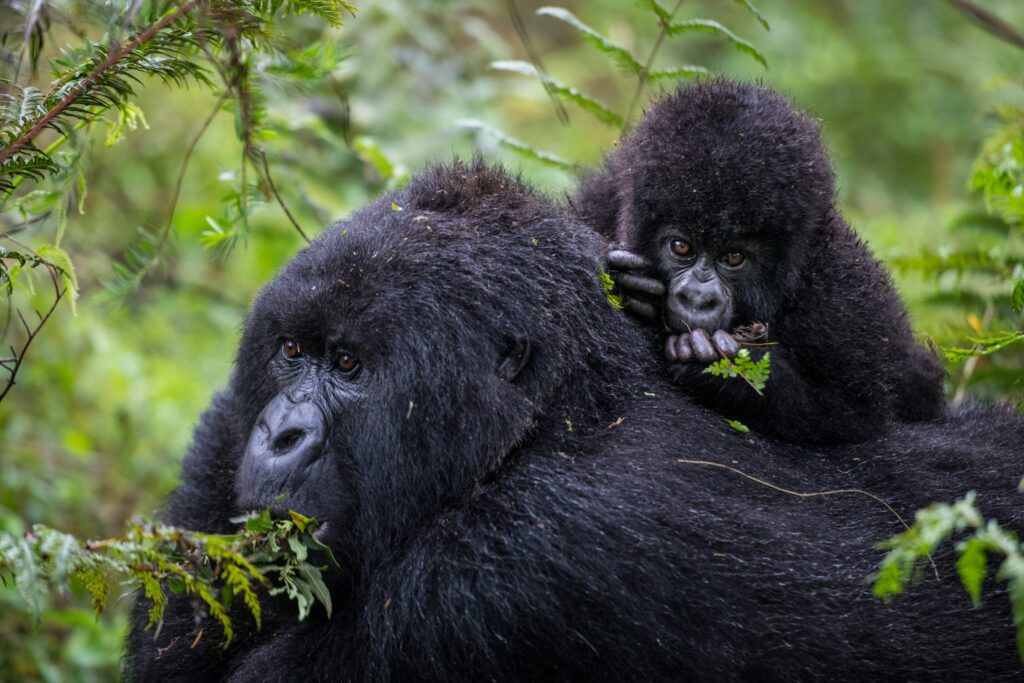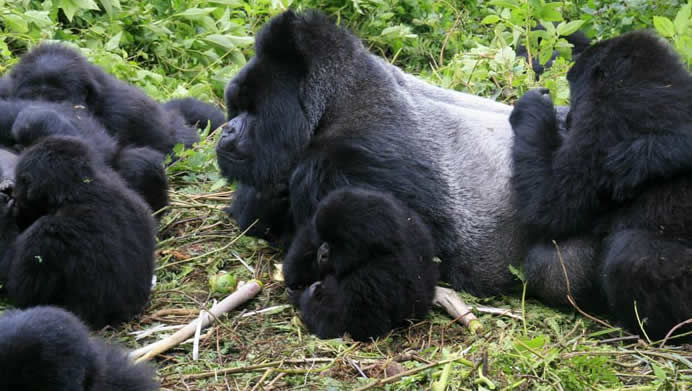Rwanda’s Hirwa Gorilla Group and Its History
The Hirwa Gorilla Group stands as one of the most fascinating families in Volcanoes National Park. The group carries a unique beginning, a rich history, and a strong cultural meaning. “Hirwa” means lucky in Kinyarwanda, and this name reflects the group’s remarkable story. Travelers who trek this family enjoy a warm and memorable encounter with gorillas known for unity and calm behavior.

The Birth of the Hirwa Gorilla Group
The Hirwa Group formed in a rare and remarkable way. The group started when individuals from several gorilla families came together. Gorillas from the Sabyinyo and Agashya families joined a young silverback who later became the founder of Hirwa. This unusual formation gave the group its name because such a peaceful and successful merging rarely happens in the wild.
Leadership and Early Growth
The founding silverback showed strong leadership from the beginning. He guided the family through new feeding zones and protected them from threats. The group welcomed newborns soon after formation, which strengthened their bond. Trekkers admired their unity and gentle behavior during the early years.
Hirwa’s Rise to Popularity
The group soon grew into one of the most visited families in Volcanoes National Park. Their home range sat near the lower slopes of the Virunga Volcanoes. This location created moderate routes that many trekkers enjoyed. The group’s calm nature, playful juveniles, and strong silverback leadership made Hirwa a favorite among travelers and rangers.

Movement Between Rwanda and Uganda
Hirwa made headlines when the family moved from Rwanda into Uganda’s Mgahinga Gorilla National Park. This cross-border movement showed how gorilla ranges often stretch across the entire Virunga landscape. The group remained safe and monitored by both countries. Their movement highlighted the importance of regional cooperation in conservation.
Return to Rwanda
After months in Uganda, Hirwa returned to Volcanoes National Park. The family resumed life in familiar feeding areas. Their movement demonstrated the natural behavior of gorillas as they follow seasonal food patterns and search for comfortable forest zones.
Life and Behavior Within the Group
Hirwa gorillas show calm and peace-loving behavior. Mothers care for infants with great tenderness. Juveniles play in bamboo thickets and keep the forest lively. The silverback guides the group with confidence and watches over every member. Their gentle nature gives trekkers a relaxed and intimate encounter.
Challenges the Group Faced
The group experienced challenges that shaped its history. Leadership changes, territorial pressure, and natural hazards influenced movement. Yet the group always rebuilt its strength. Conservation teams in both Rwanda and Uganda monitored them and protected their health. These efforts kept the family stable over the years.
Cultural and Conservation Importance
Hirwa holds strong cultural meaning in Rwanda’s conservation story. The group symbolizes luck, unity, and resilience. The annual Kwita Izina ceremony honored several of Hirwa’s infants. These naming celebrations strengthened community pride and global attention toward gorilla protection.
What Trekkers Experience Today
Trekkers who visit Hirwa enjoy a calm and rewarding trek. The group often settles in mid-altitude bamboo zones. Trails stay manageable, and the scenery stays beautiful. Rangers guide trekkers through soft forest light and fresh mountain air until they reach the family. Their gentle behavior creates unforgettable moments.
Plan Your Gorilla Trek
The Hirwa Gorilla Group remains a symbol of unity and resilience in Volcanoes National Park. A visit to this family offers a beautiful look into gorilla society and Rwanda’s conservation success.
To plan your gorilla trek and learn more about Rwanda’s famous gorilla families, inquire and book with us at https://www.gorilla-permits.com

